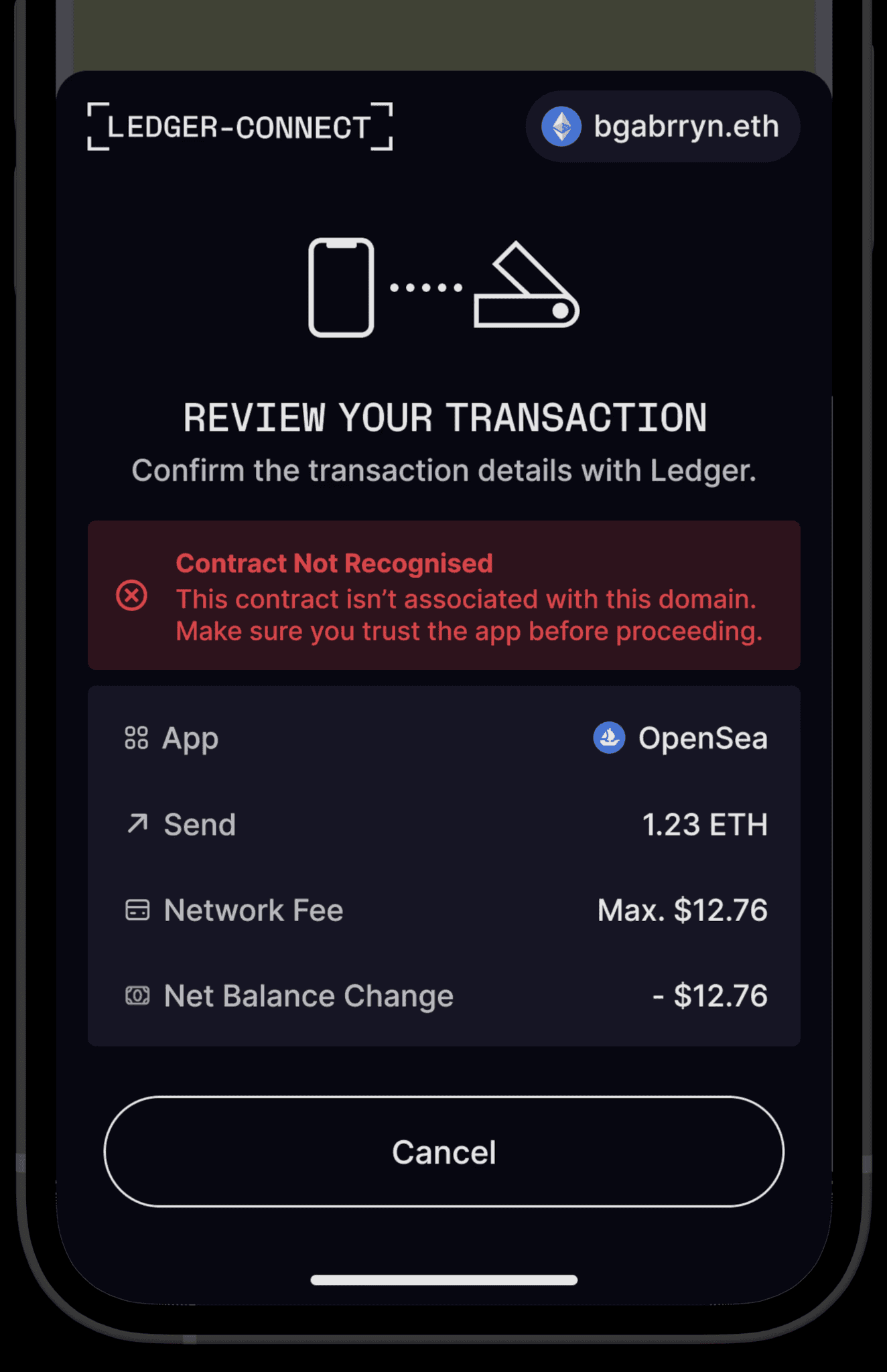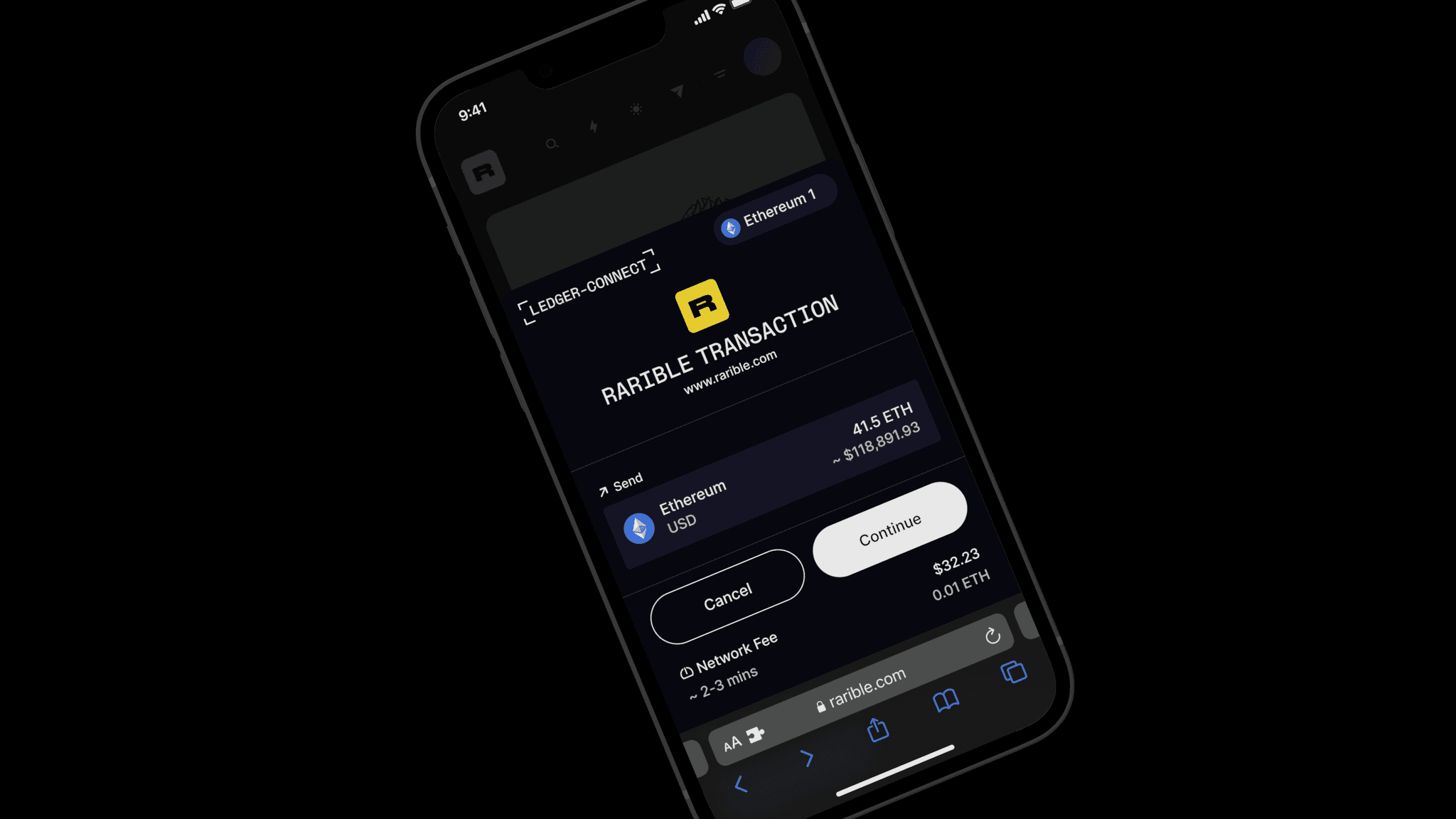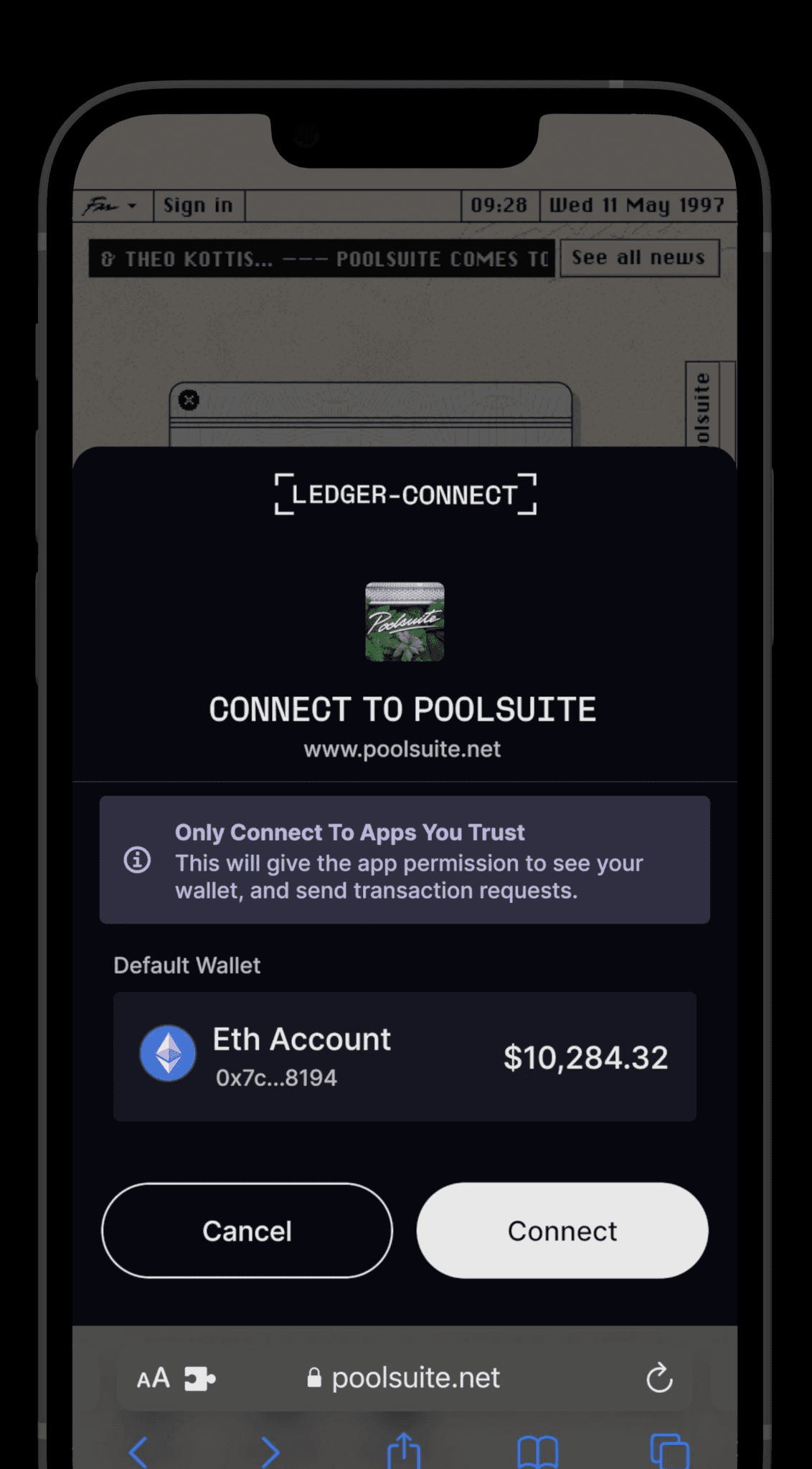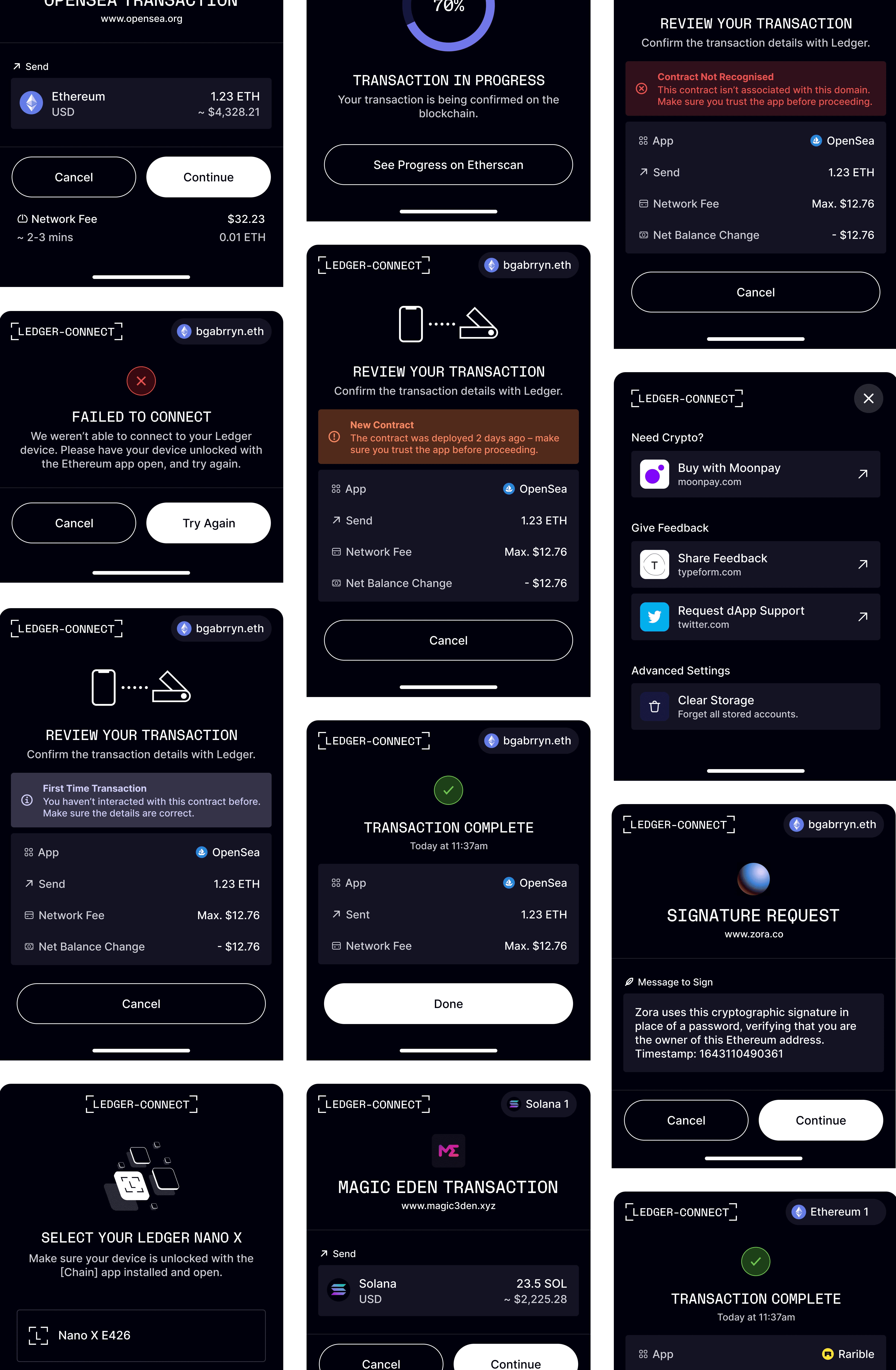2022 · Ledger
Defining The Future of Web3 Connectivity
Role
Design Lead,
Product Strategy
Time
2022 — 6 Months
Scope of Work
Product Strategy, Research, Design Sytems, Visual Design, Prototyping
Though Ledger carried a flawless reputation for being the safest hardware wallet in the market, they had no product in their ecosystem to connect with the growing number of de-centralised apps (or "dApps") in the crypto space.
Operating with a small engineering team, we were tasked with answering this very open brief.
Finding Stability
Constraints are a good
thing (no, really).
When faced with such a world of possibility, it's easy to get excited and jump straight into explorations and product ideas. While this creativity and energy is fantastic, we were operating on a tight timeline.
Time was our first constraint – we had been given just three months to define, test, and validate an experience to receive further investment.
Rather elegantly, this gave us our next constraint – scope. We were a team of 3 including myself, so even moving efficiently we didn't have the resources to spare.
At this point, we had to define the zone of opportunity for this product: what would make this product a success?
The font here is "Grayscale" from Charli Marie – it's become my go-to for anything annotate-y.
The Zone of Opportunity
Just past the Gates of Research,
before you hit iteration valley.
Finding the overlap between what makes Ledger special, and What the market needs was pretty straightforward – the Ledger product was created for security in a world that had very little.
That same world had evolved into "Web3", but the Ledger offering had yet to make the same jump. The approach here then, would be bringing the same level of safety and security to interactions with dApps.
Sounds simple enough, right?
The upgrade to security in the connection point came almost for free with Ledger's infra. We knew the biggest challenge was going to come in the connection between the product and the applications.
The very thing that makes Web3 brilliant, is also the achilles heal for anyone without deep crypto knowledge.
How do you add security to something that is, by design, without any kind of oversight?
"HMW Make Web3 Safer?"
The real question: How do you tame a world that is anti-structure by design?
The very premise of web3 is built around decentralisation; which is one sharp double edged sword. The nature of tying your funds to every interaction means playing a game that ends in one of three outcomes:
Positive, Neutral, or Catastrophic.
The secret to knowing which one often required insider knowledge, or having a high level of technical understanding.
Federating that knowledge to the wider community could dramatically improve the safety of web3 without impacting the fundamental neutrality.
Key Questions from Concept Testing
Focus —
What kind of interactions presented the biggest opportunity?
Where is our 80/20 Effort / Impact?
Oversight —
What is the community perception to interventions that provide oversight? Does that change in the instance of false positives?
Intervention —
What is the "correct" level of intervention for potentially harmful interactions?


Mission Successful?
The early Alpha was green-lit, and we were given further time to bring it to a public Beta (this was announced in a conference Keynote to a brilliant reception from the community).
The product experience itself was widely successful, but the distribution method wasn't scalable. It had been created as a bolt-on to the product due to our team's bolt-on "startup in a startup" nature, which was great for validation but not a long-term fit.
The Ledger Connect extension was removed from distribution, and the experiences we designed have been integrated into Ledger's core products.
"Rather than continue updating Ledger Extension as a standalone app, we’re integrating many of its features, such as Web3 check into other parts of the Ledger ecosystem to streamline your experience and make it easier to securely manage your assets."









